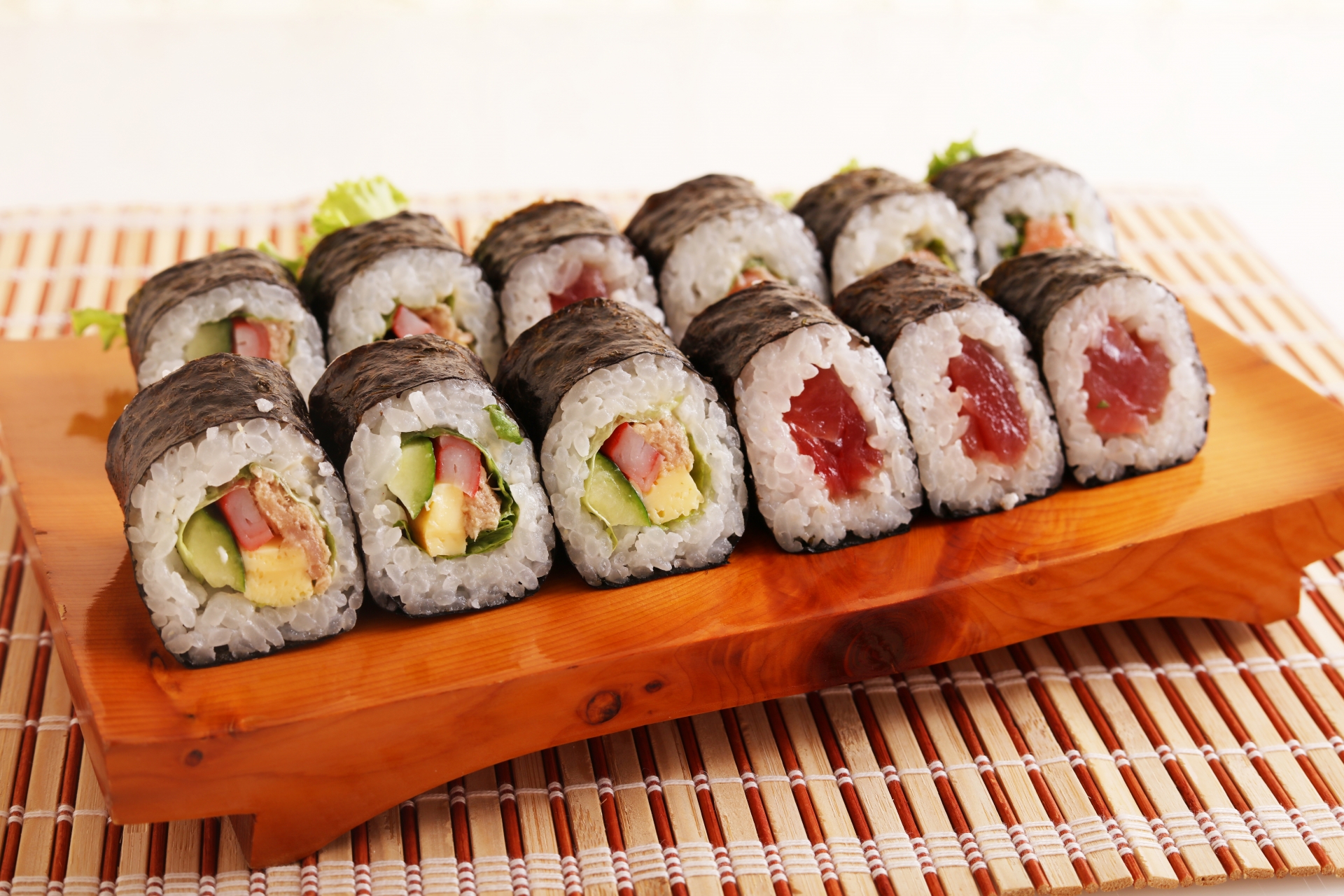Seaweed is one of the common ingredients in Japanese cuisine. When you go to a Sushi restaurant, you may see the rice wrapped with thin black sheets. That paper-like black thing is a type of seaweed which is called “Nori (海苔)” in Japanese. You might also be served a bowl of Miso soup which contains thin green leaves fluttering inside. That is another type of seaweed called “Wakame (若芽)”.
It seems that we have more than 100 types of edible seaweed in Japan. You can call all of them “seaweed” in English, or some of them will be called “kelp”, but they have various names in Japanese.
Nori (海苔)
Nori is very popular in Sushi restaurants. Nori is a general term for edible algae, including red algae, green algae and cyanobacteria, but it’s more commonly referred to square or rectangle shaped thin sheets of dried seaweed. Some of them are seasoned, though we often use unsalted Nori for cooking.
Nori is used for Sushi rolls or Onigiri (rice balls) to wrap up the rice.
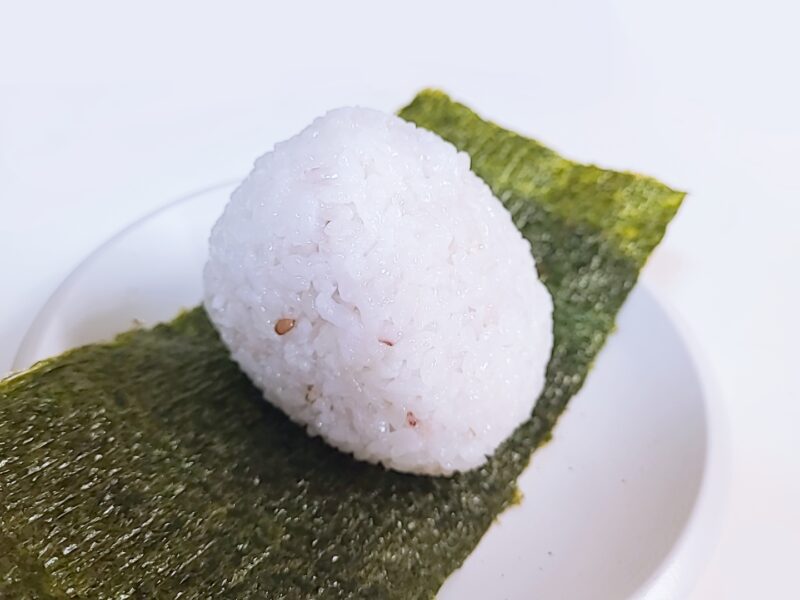
We sometimes use salted Nori in Onigiri (rice balls).
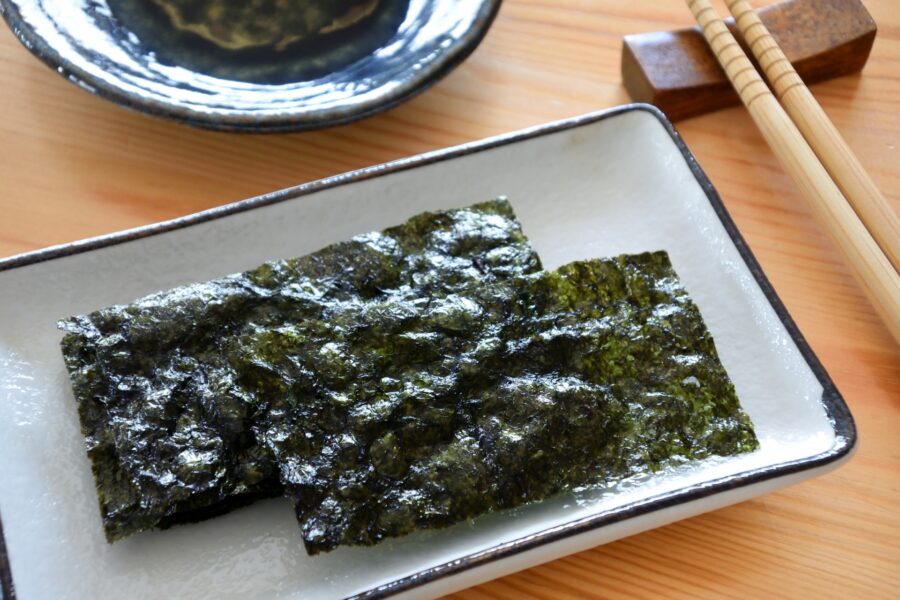
Seasoned rectangular Nori is often served for Japanese breakfast at hotels.
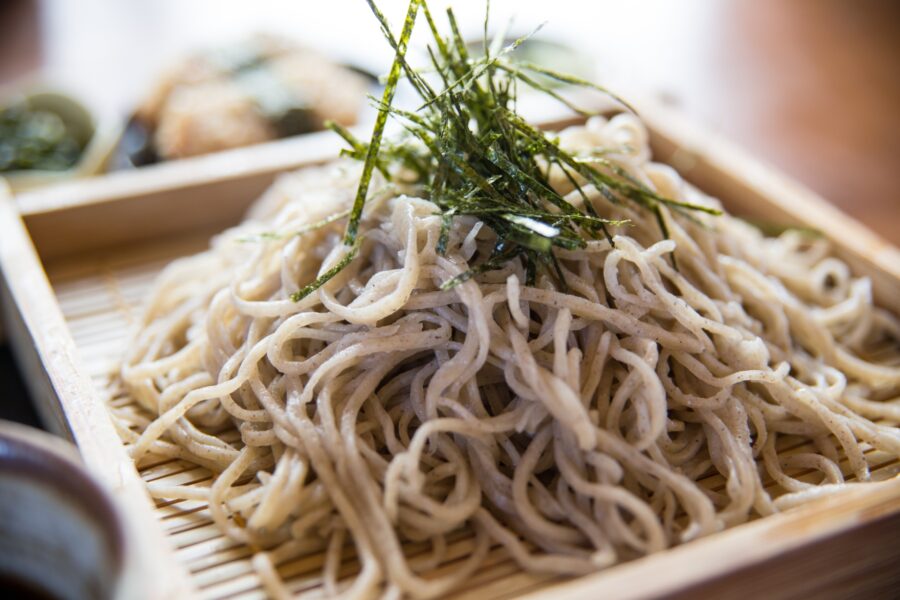
Nori is also shredded atop noodles or pasta.
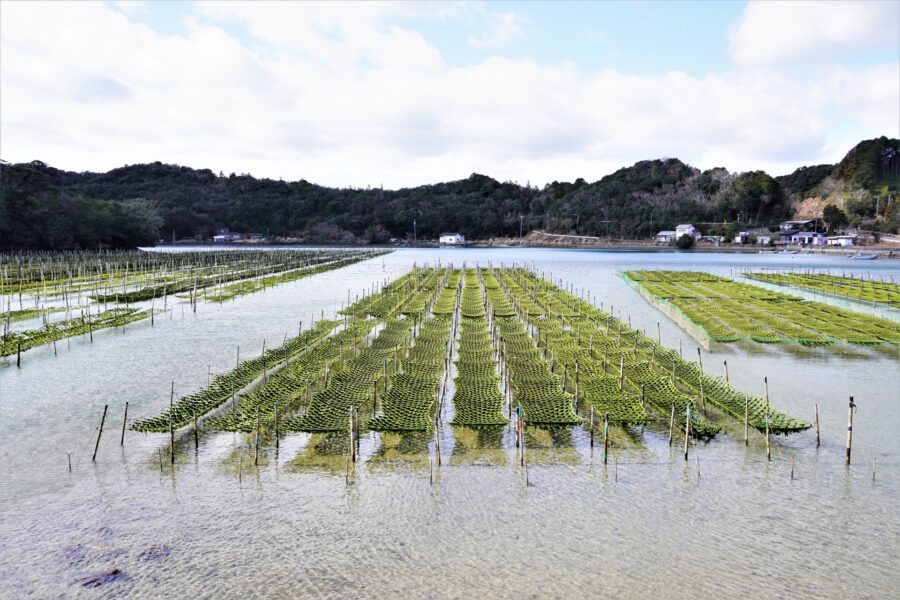
This is a Nori factory in Japan.
Kombu (昆布)
Kombu is a kind of kelp which we commonly use for making soup stock called “Dashi”. In Japanese cuisine, “Dashi” is the base of almost all kinds of traditional dishes, so Kombu has a very important role in Japanese cooking as an essential ingredient of “umami” taste.
Dried Kombu is available in Asian supermarkets. They are dried and long rectangular shaped, some of them are as long as a meter.
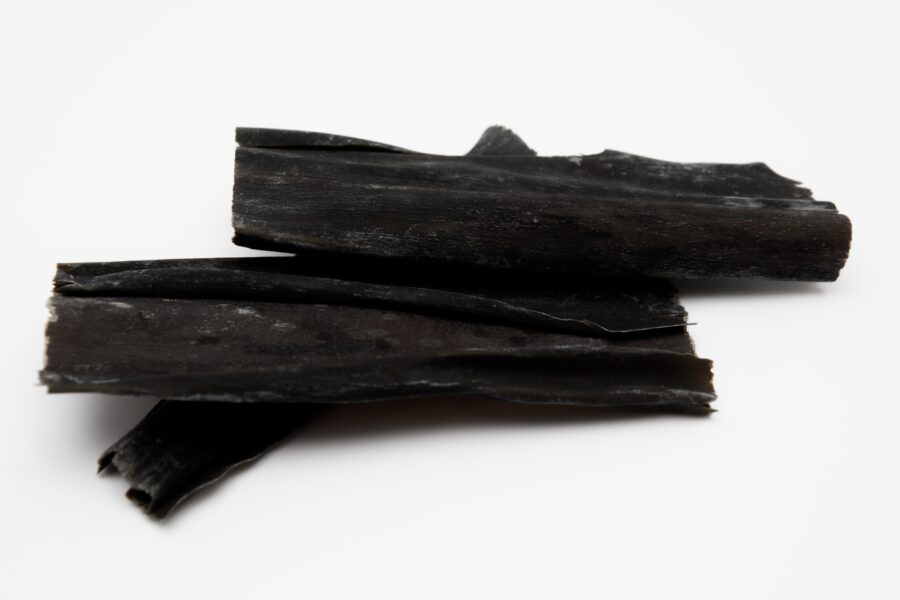
Dried Kombu is normally used for making “Dashi” soup (Japanese soup broth).
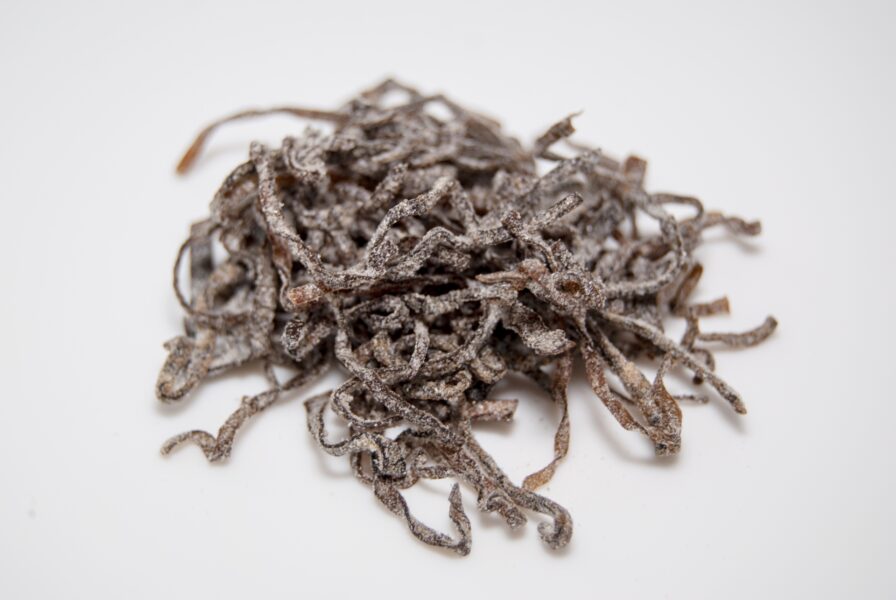
Shredded and salted Kombu is sometimes put in rice balls. It’s also used for salads like Steamed Broccoli with Salted Seaweed (Namul) to give a unique “umami” taste.
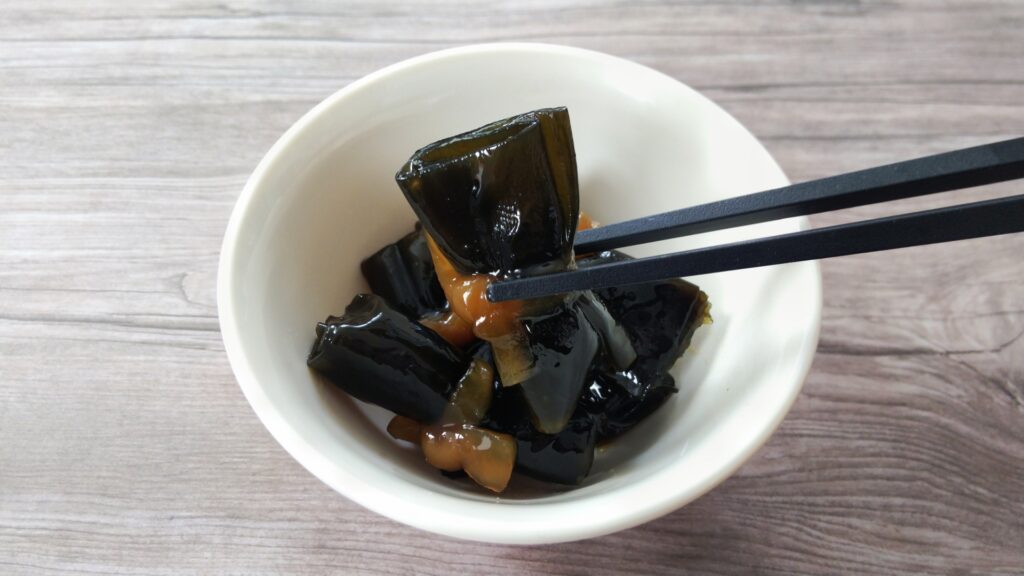
This is called “Kobumaki”, which is seasoned Kombu stuffed with a piece of Herring. Kobumaki is one of the traditional New Year foods in Japan, wishing for health and longlife.
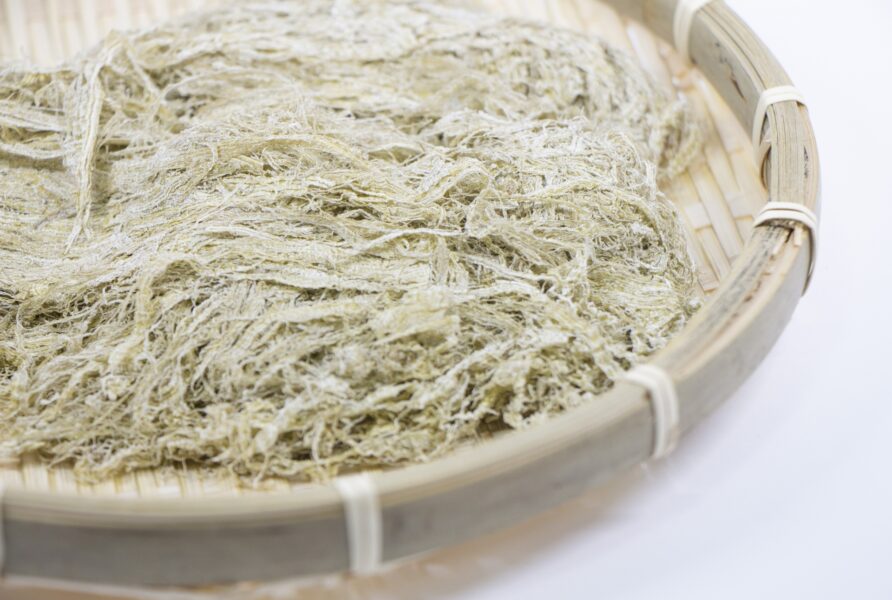
This is called “Tororo Kombu” which is processed Kombu. It is cut into thin threads after hardening the kelp into blocks. We often put “Tororo Kombu” in a soup or used as a wrapping for rice balls. It melts in your mouth.
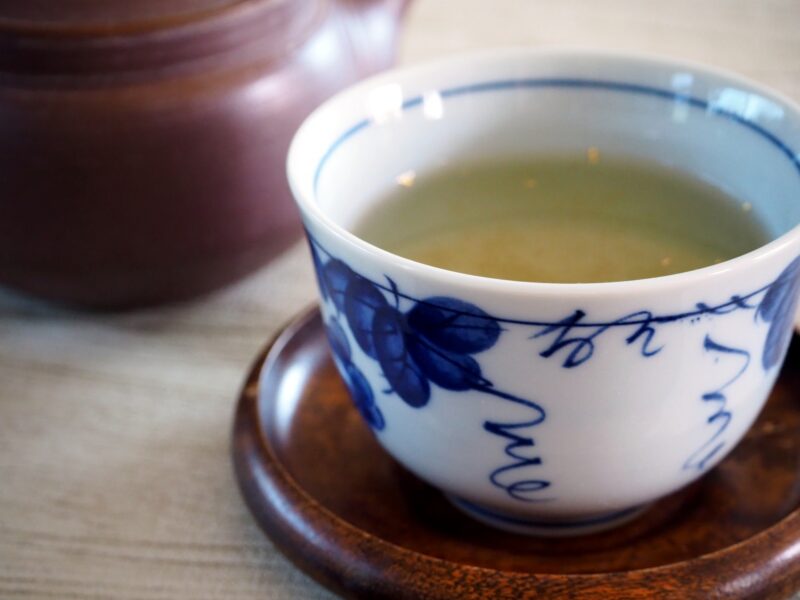
This tea is called “Kombucha” or “Kobucha” in Japanese. It’s not a fermented drink “Kombucha” which coincidentally has the same name. Kobucha is a savoury beverage that is made by pouring hot water into finely powdered kelp.
Wakame (若芽)
Wakame is another type of seaweed, often put in soups in which they look like fluttering thin dark-green leaves.
We can have raw Wakame from early spring to the beginning of summer which is the season for Wakame, but most of the time Wakame is processed into salted or dried foods. We use them for cooking after soaking in water or desalting. Apart from using in soups, Wakame is also used for vinegrated foods or salad.
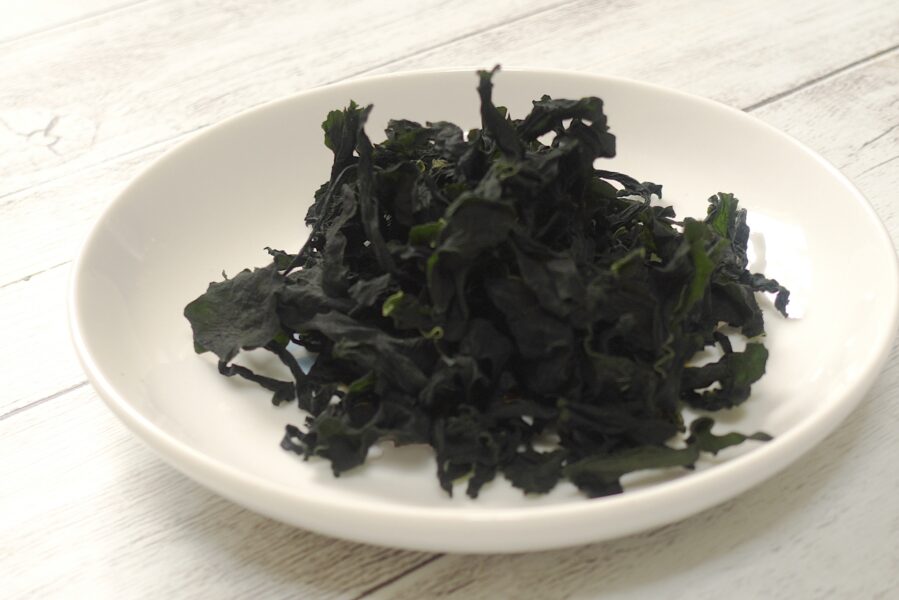
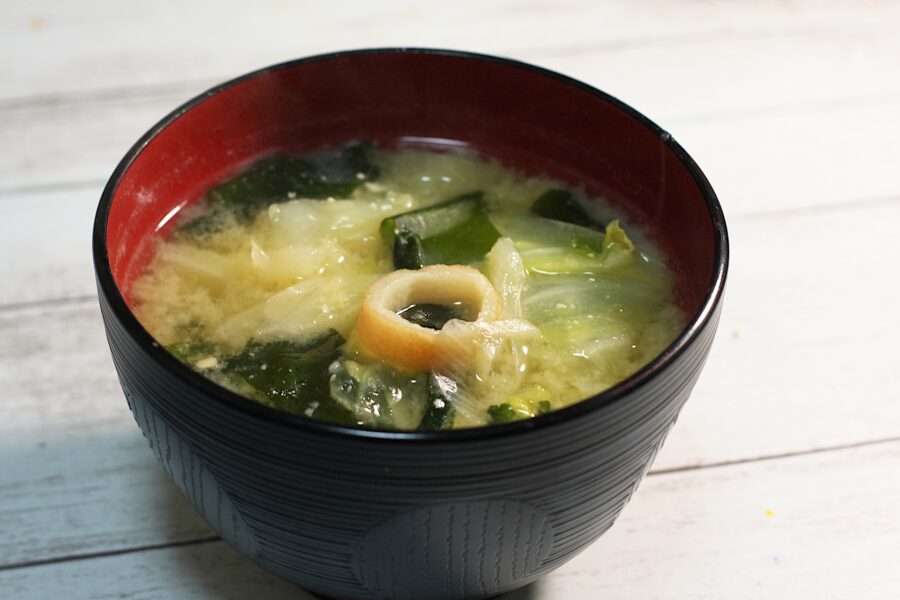
Wakame is one of the most common ingredients for Miso soup.
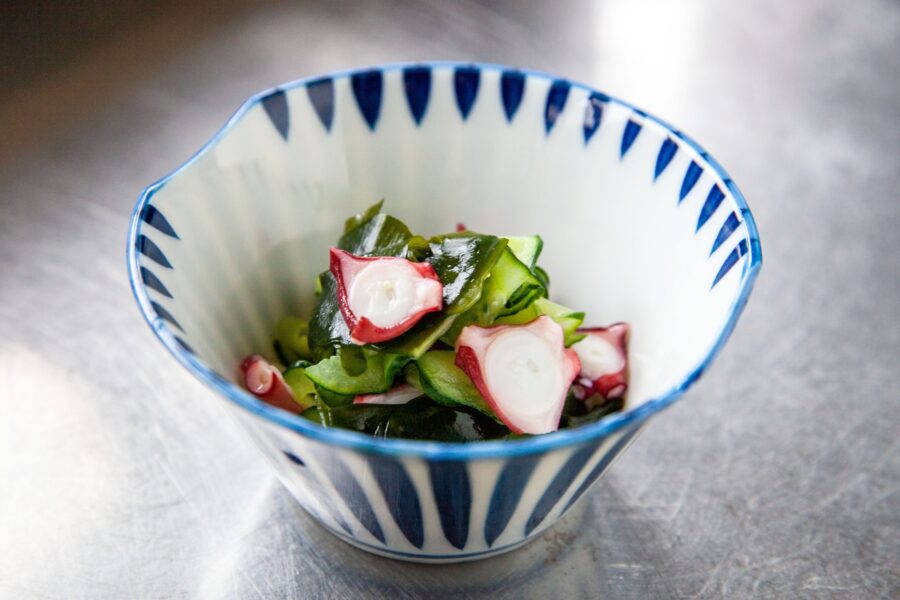
This is a vinagrated octopus, cucumber and Wakame.
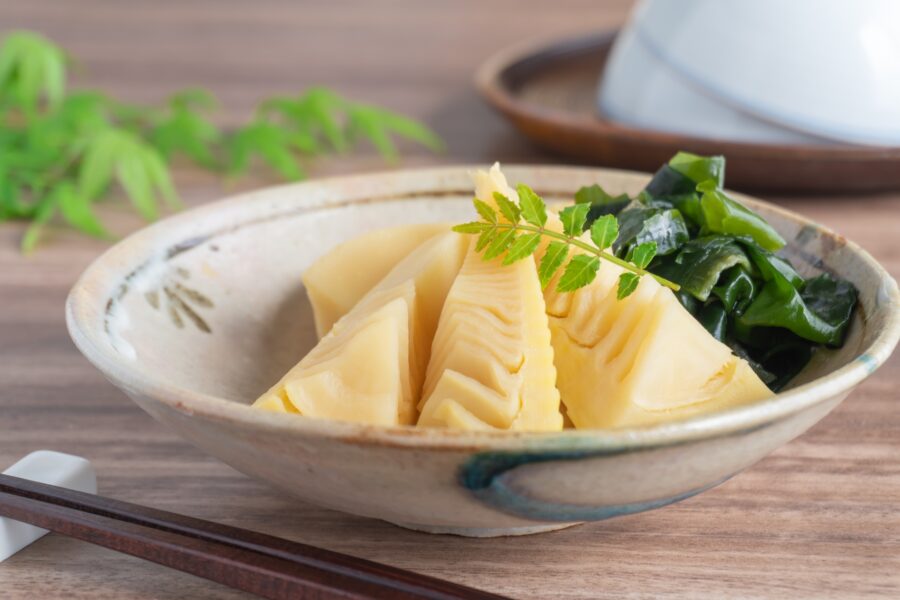
Simmered bamboo shorts and Wakame is a symbolic food of spring.
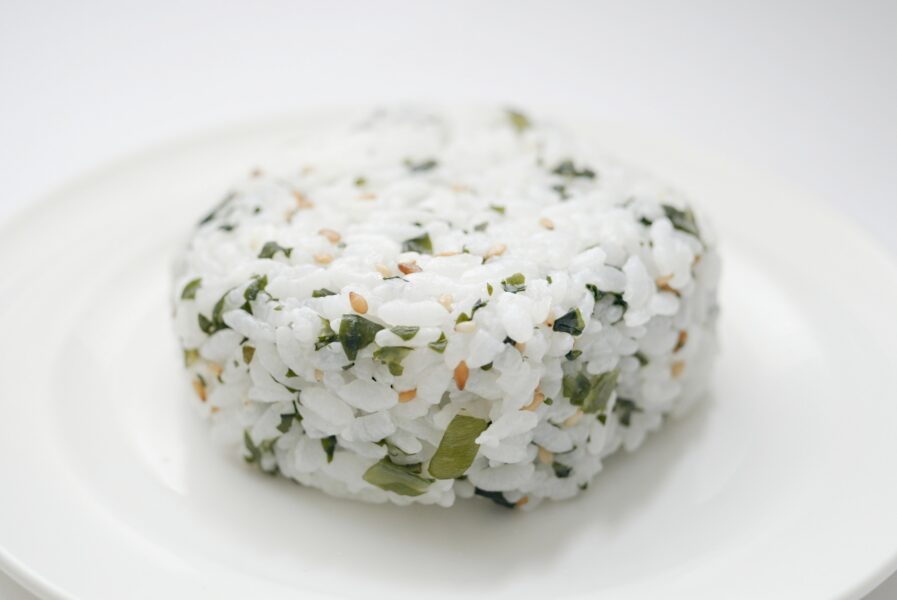
Sometimes we put Wakame in rice balls.
Hijiki
Hijiki is a thin hair-shaped edible seaweed. As an ingredient for cooking dried Hijiki is common. In Japanese cuisine, Hijiki is often simmered with sweet soy sauce after being soaked in water.
In 2001, the Canadian Food Inspection Agency (CFIA) reported that levels of inorganic arsenic in Hijiki were higher than in other kinds of seaweed and some other country’s experts advise consumers to avoid the consumption of Hijiki seaweed.
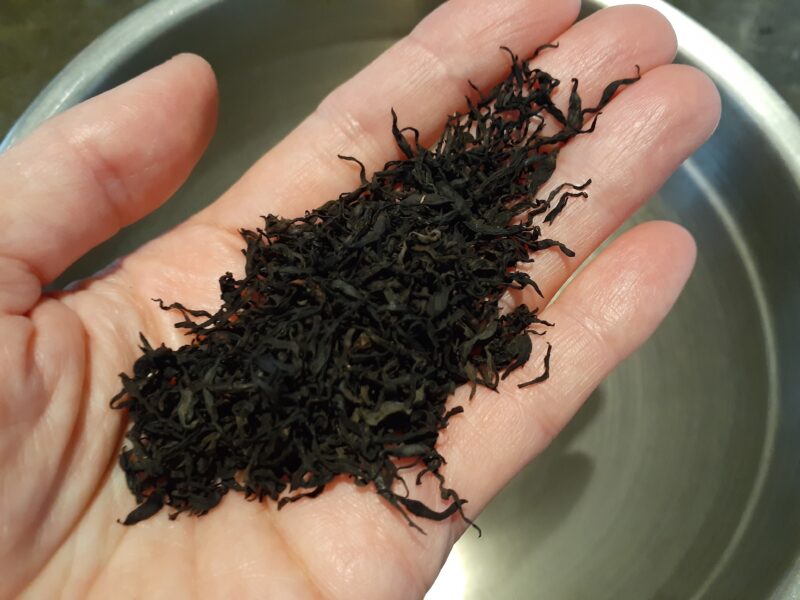
Dried Hijiki seaweed. They will be swollen up after being soaked in water.
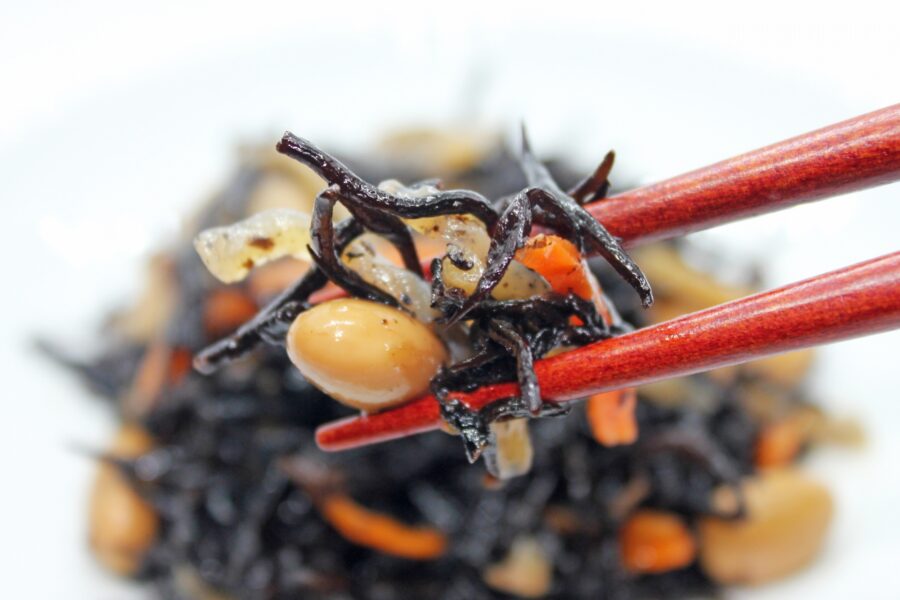
Simmered soy beans and vegetables with Hijiki is one of the most common Japanese dishes. Cooking Hijiki with rice is also very popular.
Kanten (寒天)
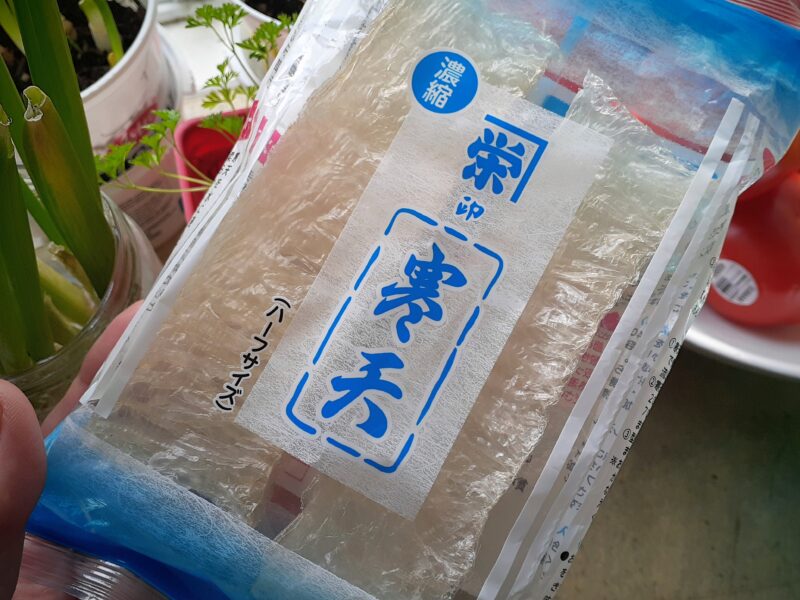
Kanten is another seaweed which is often used for dessert in Japan. In English, it’s commonly called “Agar” which is borrowed from Malay. Kanten is made by blending seaweed and normally it’s sold dried. When we use it, we soak it in water and then boil it. It melts at 85C degrees or higher and it turns into gel at 38C degrees. How it works and how we use it are very similar to gelatine, but Kanten is a vegetable while gelatine is made from pigs or fish.
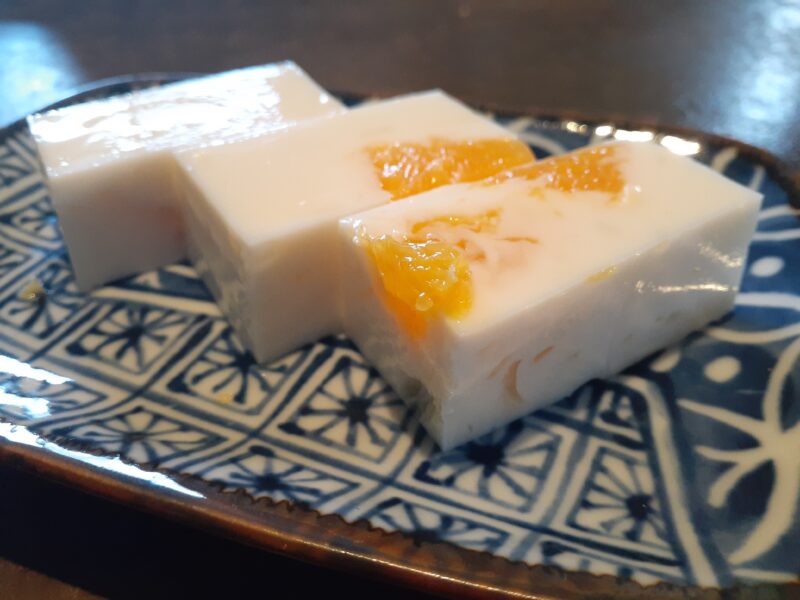
Kanten pudding or jelly is a typical summer dessert for Japanese. We often put some fruits as well as milk. If you add almond to milk Kanten, you can make Chinese almond tofu “杏仁豆腐” (almond jelly). It is processed as dried “Kanten” bar or powder.
